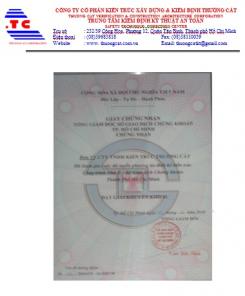Much of the current bad debt is not normal bad debt which is becoming more complex kind of bad debts , difficult recovery processing . There are many causes for bad debts difficult to handle .
Professional activities in ABBank .
Among them, the most complex in NPLs is 5 problems : First, the characteristics of the banks bad loans is largely tied to real estate mortgage (real estate) . The handling of the mortgaged property must confront a legal matrix , in the context of the real estate market froze last. Besides, barriers bad debts from major credit sometimes . Period property market bubble , banks have collateral valuation too high . Expect full recovery of debt , avoid liability , banks could only " debt culture " , awaiting the real estate market rose . This is risky behavior , delusions make greater debt liabilities husband , has prolonged bad debts , property damage has made banks more .
Mortgage assets as security for the loan is a last resort that banks in the world to use in granting credit, because of the risks. They care efficiency loan projects but rarely interested collateral. Meanwhile, Vietnam banks opposite notion, as collateral is the leading measures, even unique. Relying on collateral security context "can not repay debts, the collection of collateral" should in many cases, the bank underestimated the effectiveness of projects and project cash flow loans. It has by enabling borrowers are using loans exclusively outside the bank's control. Consequently, the bank "into the woods to chase the chicken drop".
Second, a principle to heart in the banking business is, the interest rate of bank loans to lower profitability of firms borrowing. Thus new businesses afford to pay principal and interest to the bank. However, there are periods (2007 -2008), the lending bank at an interest rate of 20% / year. Try asking, with the loan interest rate from 20-25% / year, a few companies stand? Only real estate companies in the new swing view that interest rates are still "good". Due to risk of high interest rates, many enterprises make losses and bankruptcy. Consequently, the bank must receive a huge volume of bad debts, which lasted several years.
Third, there is no official statistics on bad debt of state sector enterprises (SOEs) in total NPLs of banks. However, according to the calculations of experts, this figure accounts for about 60-70%. The disposal of bad debts for many SOEs are expected to "elect milk" the state budget through major surgery SOE restructuring. However, this process is more stalemate. Expected bad debts of SOEs by road budget as debt relief, debt reduction, debt freezing, refinancing is something totally wrong. Actual State does not have the resources to cover overspending by budget pressures. Moreover, the treatment that is contrary to the principle of operation of the market economy that Vietnam is determined to reach. Bad debts of SOEs are caused CI, business caused by inefficient and has caused the state mechanism. But ultimately, this is kind of bad debts "bad institutional debt". Are bad debts by institutions must be addressed from the very institution? This problem can not be solved in a day or two.
Fourth, no fewer bad loans of banks today is kind of bad debts linked to the criminal case. Someone said a dark comedy that, the last time the bank is season time case. The major case involving credit granting and continued treatment of the proceedings is poured for bad credit debt burdens and heavy. Even when the case has been processed, the recovery of debts will be extremely difficult, costly expense, effort gained new hope somewhat or that part. As for the cases under investigation, which could last several years, the expected recovery of debts can not seem put out. NPLs of the case is very complex kind of bad debts. By considering the nature, bad debts to loading or unloading, loading or unloading at the same time liabilities of the officials concerned in granting credit machine. This process is not as rapid legal caution must be at the top?
Fifth, over time, the bad debt of the banks very confused, suspicious. At least 3 channel put the figure of bad debts: self-reported bad debt of the banks; bad debt control inspection by the State Bank of Vietnam (SBV) has to offer; bad debt held by the international credit rating determination. Seemed to follow a rule, at the same time, greater numbers of SBV's statistics and data banks and international organizations is higher than the central bank figures. The spread of data is very high. This is very understandable, because for banks, with a self-reported bad debt they are entitled to hide the truth about bad loans. The determination of the bad debt of financial institutions are now defined all the international practice direction by the text of the State Bank. However, the data was sufficient to force sanctions liabilities with banks when they report their bad debts incorrect. Or, just to self-discipline and responsibility are the main generic? There also many banks still attempts to hide the bad debt . An Binh Joint Stock Bank ( ABBank ) is just one example : According to the Binh Bank , bad debt as of 31/12/2014 was 2.75 % , down 2.1 % compared with 12.31.2013 . For a beautiful figure of bad debts under benchmark 3 % , they only increased by calculating the denominator in the calculation of bad debt . If not so , the fact of ABBank NPLs remain at 4.8 % . Obviously , once the bad debt of the banks has not been determined transparently , the bad debts are still unknowns looking for before trying to reduce .
News other
.jpg)








